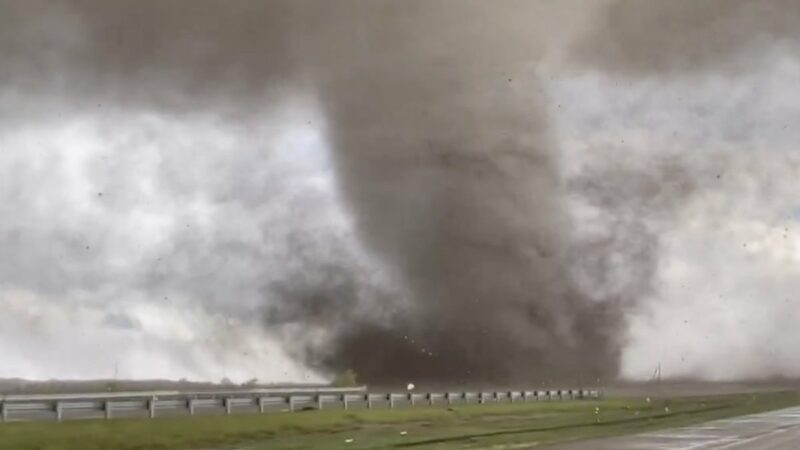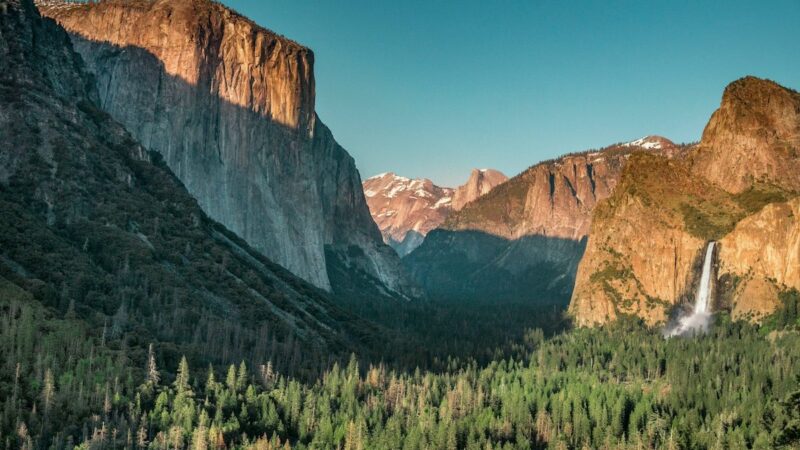The Ultimate National Park Road Trip: How to See all 51 National Parks in the Continental U.S.
The United States is home to 63 national parks, most of which are located within the continental U.S. From expansive desert landscapes to some of the tallest mountains in the country to islands right off the coast, there is so much to see.
Videos by Outdoors
The U.S. National Park Service manages over 400 units, including national parks, monuments, and recreation areas. They all hold a different designation based on what is being protected, whether it’s natural landscapes, historical relics, or some combination. The 63 places that hold “park status” are located throughout the United States and are a mix of both natural and historic significance.
While it would be a long haul, it is more than possible to do a massive road trip that connects all of the national parks in the continental U.S. In 2019, I personally drove through all of the contiguous 48 states solo with the goal of visiting as many parks as I could. While I didn’t hit all of them on that first go, I’m now 52 parks in and work as an adventure guide in many of our western parks.
So, from California to Florida to Maine, this is the ultimate national park road trip. Pack your bags, gas up the car, and don’t forget your hiking boots—let’s go.
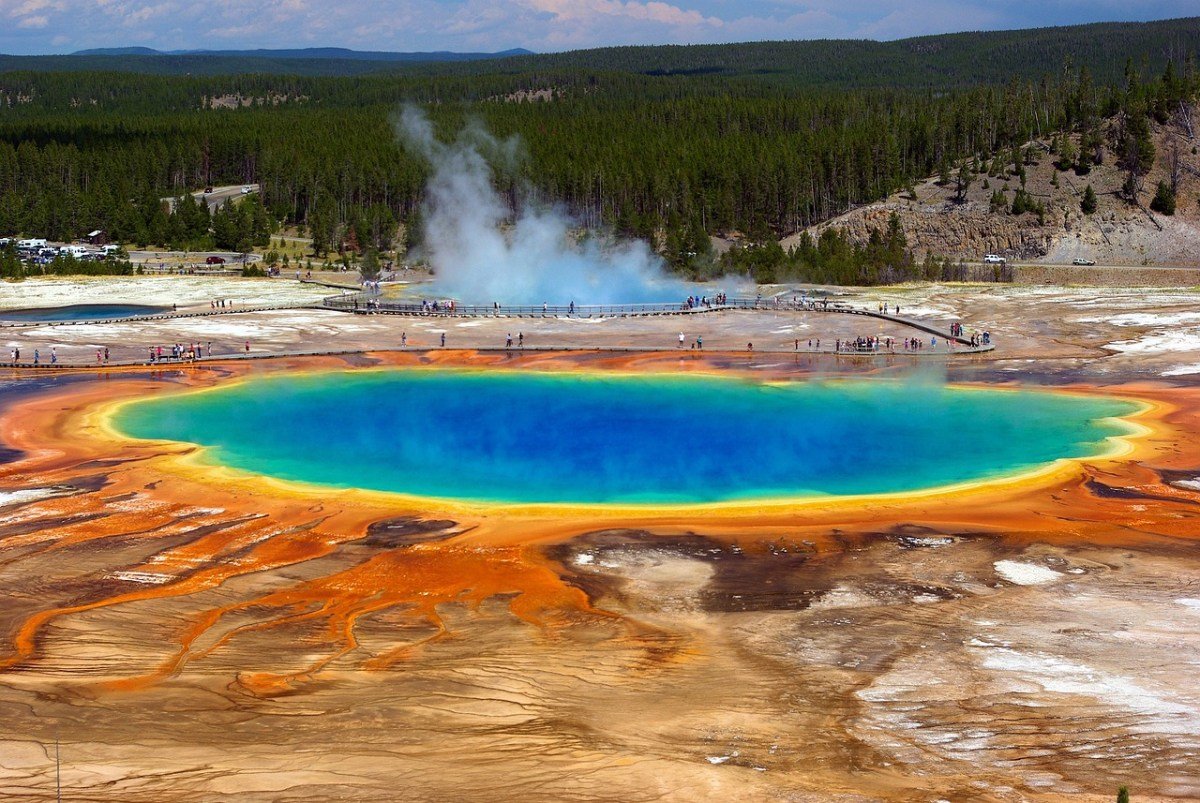
A Tip From a Full-Time Nomad
I’ve been living on the road and visiting national parks for almost five years now, and the number one piece of advice I have for anyone attempting a trip like this is to purchase an America the Beautiful Pass. This pass is $80 and allows entry into every National Park Service site in the country, which saves you so much money on entry fees. Most parks are approximately $30 to enter, so once you’ve visited three parks, your pass has already paid for itself.
The Weather
Something to keep in mind when doing a trip like this is the weather. It would be best to visit most of these parks in the summer, and while you can visit a lot of them in the off season, it’s crucial to check conditions. Determining when you’re going to start your road trip is going to depend on weather, road closures, and park accessibility. For example: Lassen Volcanic and Crater Lake have lots of winter road closures, and Isle Royale is completely inaccessible in the winter. On the other hand, visiting the Florida and Texas parks is going to be more pleasant in the cooler months.
For this reason, I’ve divided this route into sections that make sense to do seasonally. You won’t be jumping from the desert to the high alpine, so you can stay safe and prepared for what’s ahead.
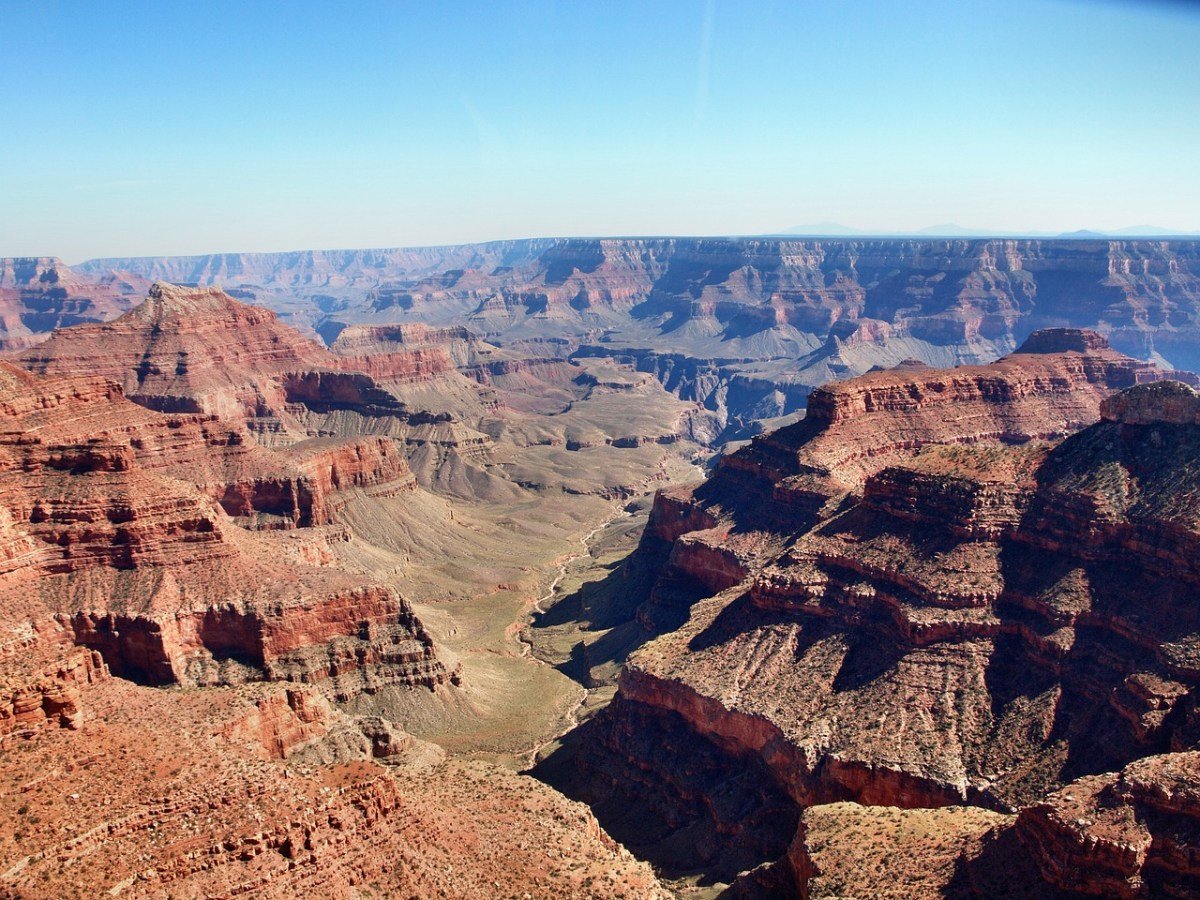
Southwest
There’s no better place to start and end this road trip than the stunning southwest. Because you’ll be traveling all over the country, it only makes sense to have this road trip be a loop. Most of the parks in the American Southwest are fairly warm in the winter, with the exception of Bryce Canyon and Capitol Reef. However, it can be assumed that roads are generally open in these areas in the colder months.
Let’s start our journey in Joshua Tree National Park in California. This park is a great place to start—it’s easy to navigate, accessible for most beginner national park travelers, has great camping, and great views. It’s a fantastic introduction to the southwest, with massive granite rock features, desert flora and fauna, and sunny skies most of the year.
From Joshua Tree, drive east to Grand Canyon National Park, one of the seven natural wonders of the world. This is one of those places that’s on just about everyone’s bucket list, and it is a great place to camp, hike, or backpack. I’ll save the rest of the Arizona parks for later, but for now, let’s head north.
Not too far north from the Grand Canyon, we’ll hit the first of Utah’s Mighty Five: Zion. Known for stunning red rocks and the infamous Angel’s Landing hike. Visiting the rest of Utah’s parks is easy, simply drive east. This will allow you to witness the diversity in red rock formations, from hoodoos to natural arches. From Zion, you can easily hit Bryce Canyon, Capitol Reef, Canyonlands, and Arches in one week or less, maybe throwing in some underrated state parks along the way. Keep in mind that during peak season, Arches does require a timed entry reservation.
From Utah, it makes sense to stay in the desert a little bit longer, stopping at Mesa Verde National Park in Colorado before heading south. Mesa Verde is known for its ancient ruins, so stop and take a tour while you’re here to see them up close.
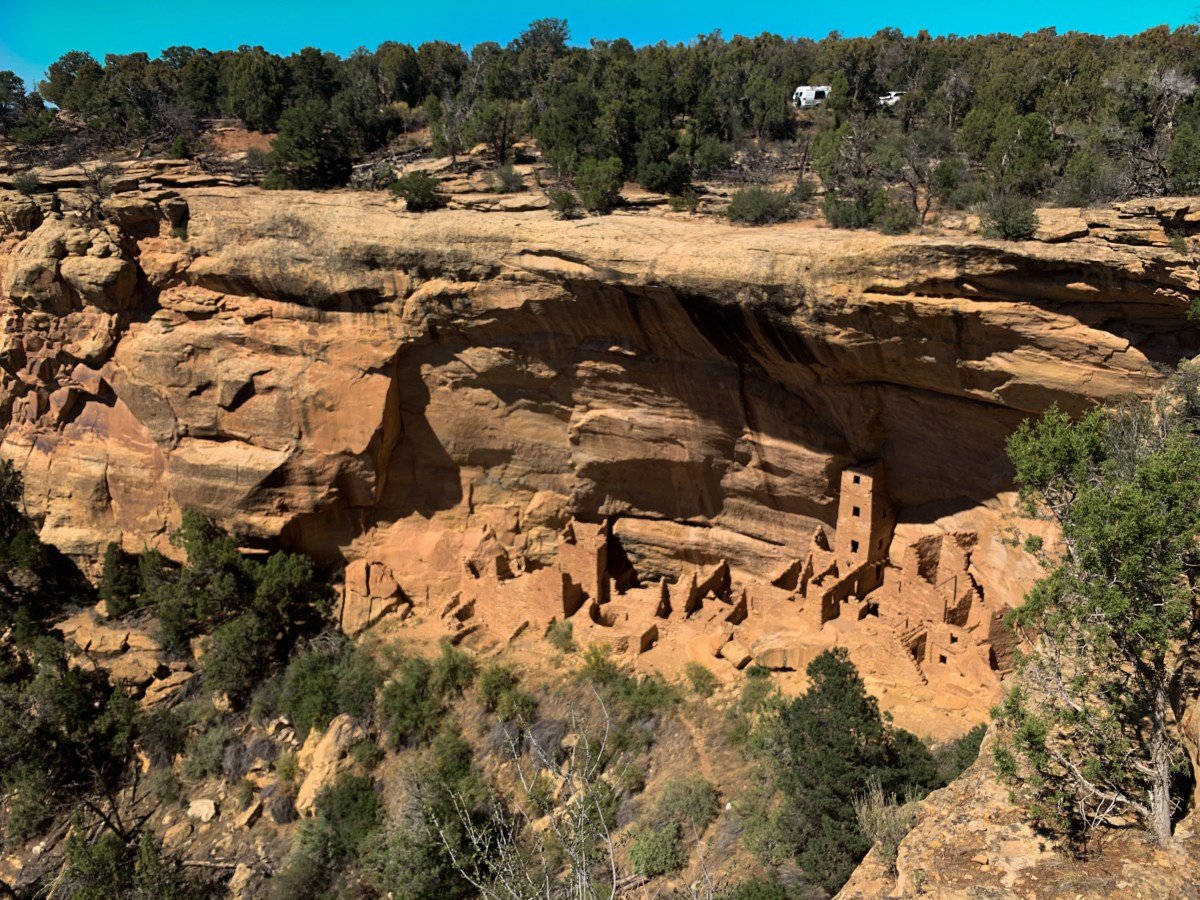
South from Mesa Verde, you’ll visit Petrified Forest National Park, which is a perfect day trip destination where you can appreciate the fossilized wood, and walk your dog—this is a dog-friendly park. Saguaro National Park is next, right outside of Tucson, Arizona, where you can walk amongst giant cacti. Both of these Arizona parks are fairly small and take little planning.
As you head east, you’ll hit White Sands National Park, home to a massive gypsum dune field. This is your first of a few sand dune parks, and while it’s smaller than the others, there is nothing like sand that looks like snow. Go on a hike on the dunes or rent a sled and enjoy the downhill ride.
Staying in New Mexico for one more park, head down to Carlsbad Caverns. Walk down into the cave and check out the underground rock formations. Make sure you stay for the bat flight program at sundown if you visit in the right season—this is an unforgettable wildlife experience.
Just a few miles south of Carlsbad Caverns is Guadalupe Mountains National Park, home to the tallest peak in Texas. This is a smaller park that doesn’t need a ton of time, unlike its neighbor to the south, Big Bend. This park’s name makes it clear; in order to see the whole park, you’ll need a couple days. Check out the Chisos Mountain area and the Rio Grande River here. Go hiking or soak in a hot spring, just keep in mind that being so far south, this park is a hot one in the summer months.
This concludes the southwest portion of the trip, and while there are a couple desert parks left, the way they’re accessed means they’ll be on your route later in the trip.
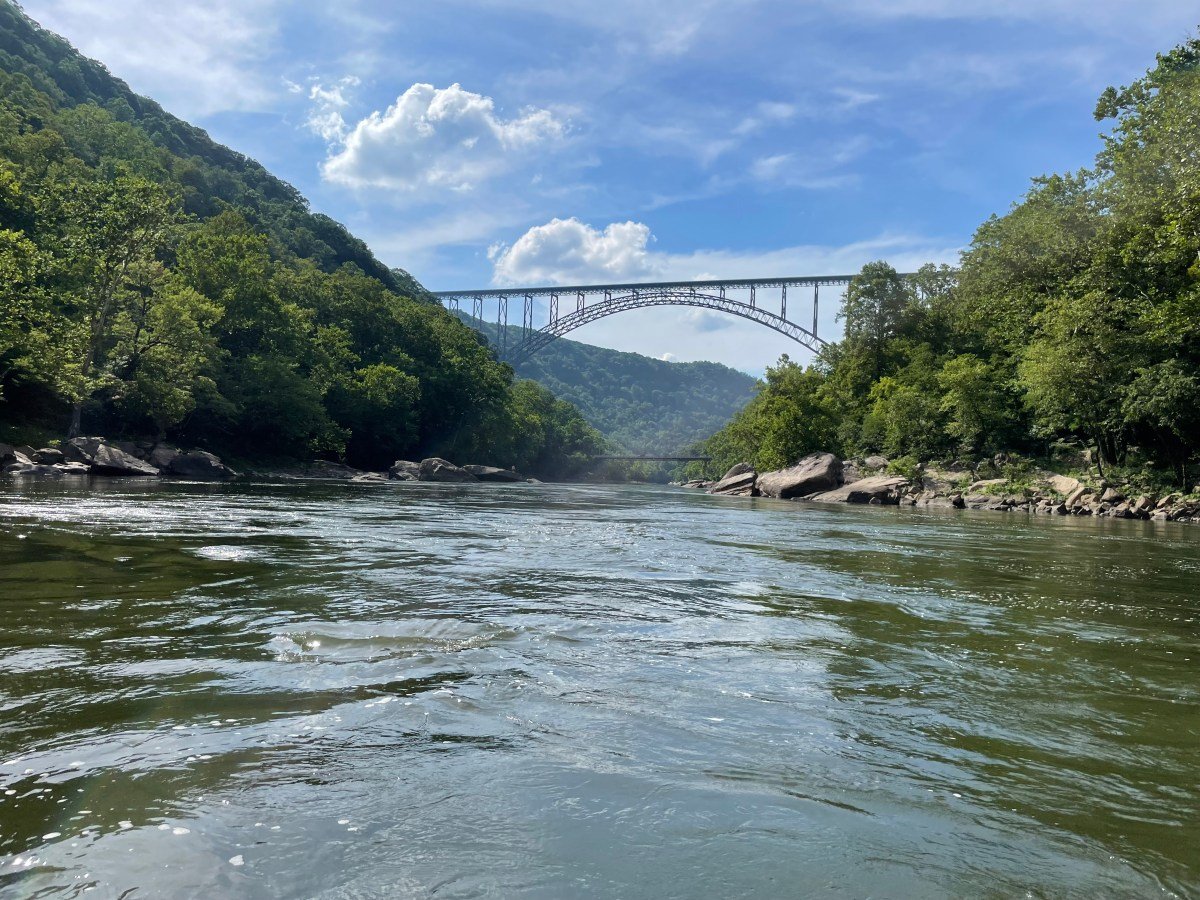
Southeast
From Texas, you’ll keep driving east, heading to Arkansas, where Hot Springs National Park is located. This park is more of a historic district, but with a beautiful campground and some hiking trails, it’s truly a mix of everything you could ask for in a park. Make sure you try the natural spring water and visit one of the historic bath houses while you’re here.
The thing about the eastern side of the U.S. is that the parks here are a lot less condensed. The next park on this route isn’t until southern Florida, where we’ll visit three: Biscayne, Everglades, and Dry Tortugas. Everglades is known for its swampy Florida landscape and is the only location in the world where you’ll have the chance to see both crocodiles and alligators. Biscayne is best seen by snorkeling through the park’s protected waters. Dry Tortugas does require a boat to get there, which must be reserved in advance, but once you arrive, you’ll be able to explore this old fort and its surrounding tropical waters.
Since the Florida parks are right next to each other, we’ll head north from here and start heading up the east coast, stopping at Congaree National Park in South Carolina next. This is a great park for wildlife viewing and is the perfect way to experience the unique swampy landscapes of the southeast. Not too far from Congaree is Great Smoky Mountains, located on the Tennessee and North Carolina state line. This is the most visited national park in the country and is a fantastic place to hike, visit waterfalls, and chase views.
From Great Smoky Mountains, you won’t be far from New River Gorge National Park in West Virginia. This is the newest national park in the country, and it’s known for whitewater rafting and rock climbing. Its river is the second oldest in the world, and you’ll be able to hike, camp, and so much more during your time here.
From New River Gorge, head to another iconic Appalachian park: Shenandoah. Shenandoah is similar to the Smokies but with fewer crowds. Take on one of the iconic hikes here, like Old Rag, and camp in one of the park’s many beautiful campgrounds.
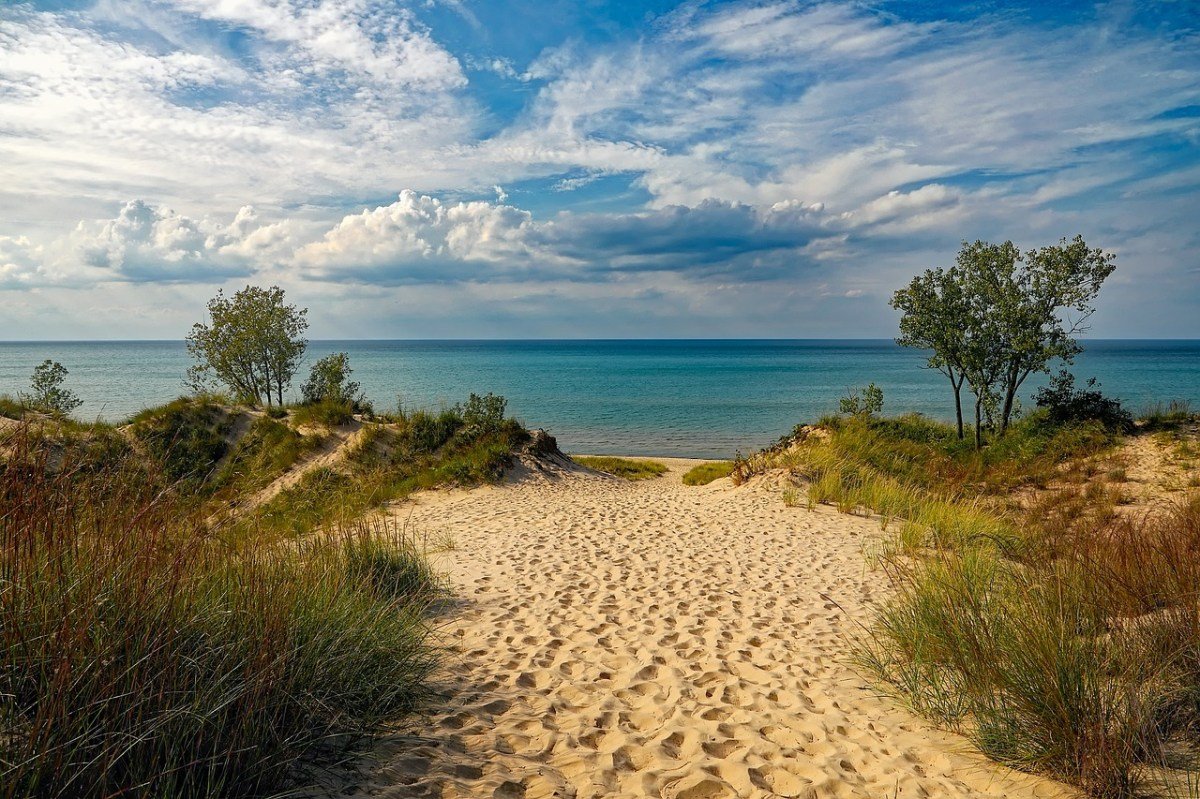
New England and the Midwest
This section of the country is hard to put a name on, because you’ll be traveling through many states that don’t have national parks in them. That’s not to say there aren’t beautiful things to see, but there won’t be another park until you reach Maine. In Maine, you’ll visit Acadia National Park. Located on an island off the coast, Acadia is known for having the first sunrise in the U.S. every day. There are lots of hiking trails, and even opportunities for rock climbing here in Acadia, and don’t forget to stop at one of the many beaches.
Coming up next, you won’t have another park until you hit Cuyahoga Valley National Park in Ohio. This park is a little more urban than others, but it’s known for waterfalls and its scenic train ride. At this point, you’re heading west, and your next park is Indiana Dunes. At first glance, Indiana Dunes might not seem like much, but the reality is, it’s one of the most biodiverse places in the country. Like lots of sand dune parks around the U.S., this is another great place to bring your dog.
Now, you might be thinking we skipped a couple, but don’t fret—you’re heading to Mammoth Cave next. Mammoth Cave is the world’s longest known cave system. Take a cave tour here, and learn about the cave’s rich history. This park is also home to one of my favorite campgrounds in the Midwest—definitely spend the night here and make the most of your time in Kentucky.
Speaking of history, Gateway Arch is your next park. This iconic landmark is probably the most different from the rest of the destinations on our list. During my visit, I was told by a ranger that the reason it became a park was due to the historic significance of the land the arch was built on. Take the elevator to the top of the arch and look over the city of St. Louis.
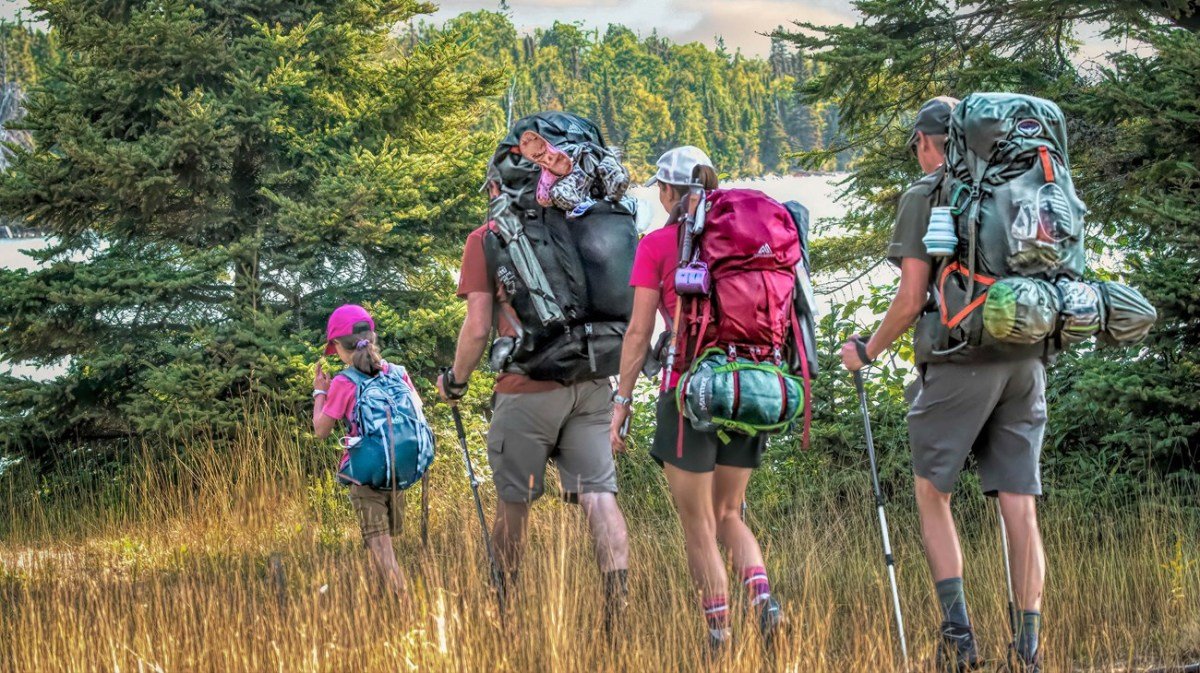
Northwoods and Great Plains
While Isle Royale is in Michigan, you’ll drive up to the Upper Peninsula through Wisconsin. Make a stop at Apostle Islands on your way to your boat harbor. Isle Royale can only be accessed via boat, which must be reserved in advance. Isle Royale is going to force you out of your comfort zone: the boat ride is too long for day trips, so most people camp for at least one night on the island. This is also a great place to try backpacking for the first time.
Once you reunite with your car, you’ll drive to Voyageurs National Park in Minnesota’s Northwoods. This park does have hiking trails but is best seen and appreciated from the water. It’s a fantastic place to rent a kayak or canoe and head out to one of the islands while you take in a view of Canada in the distance.
From Voyageurs, you’ll keep heading west to Theodore Roosevelt National Park. This park will be your first taste of badland formations. Theodore Roosevelt is known for its wildlife, so keep an eye out for prairie dogs, bison, and wild horses. Make sure you explore both the north and south unit as well—they’re very different from each other and worth seeing.
Next, head south to Badlands National Park. This is easily one of the most otherworldly landscapes in the country, and here, you’re able to hike anywhere, even if there’s no trail. Because of this, there aren’t a lot of designated trails in the park, but a fun, short hike is the Notch Trail. Make sure you get up for sunrise here and take in the views of bison, coyotes, pronghorns, and prairie dogs.
Wind Cave National Park is next, where you’ll be able to explore both above and below ground. Take a cave tour and go on a hike to experience the bison herds on the surface.
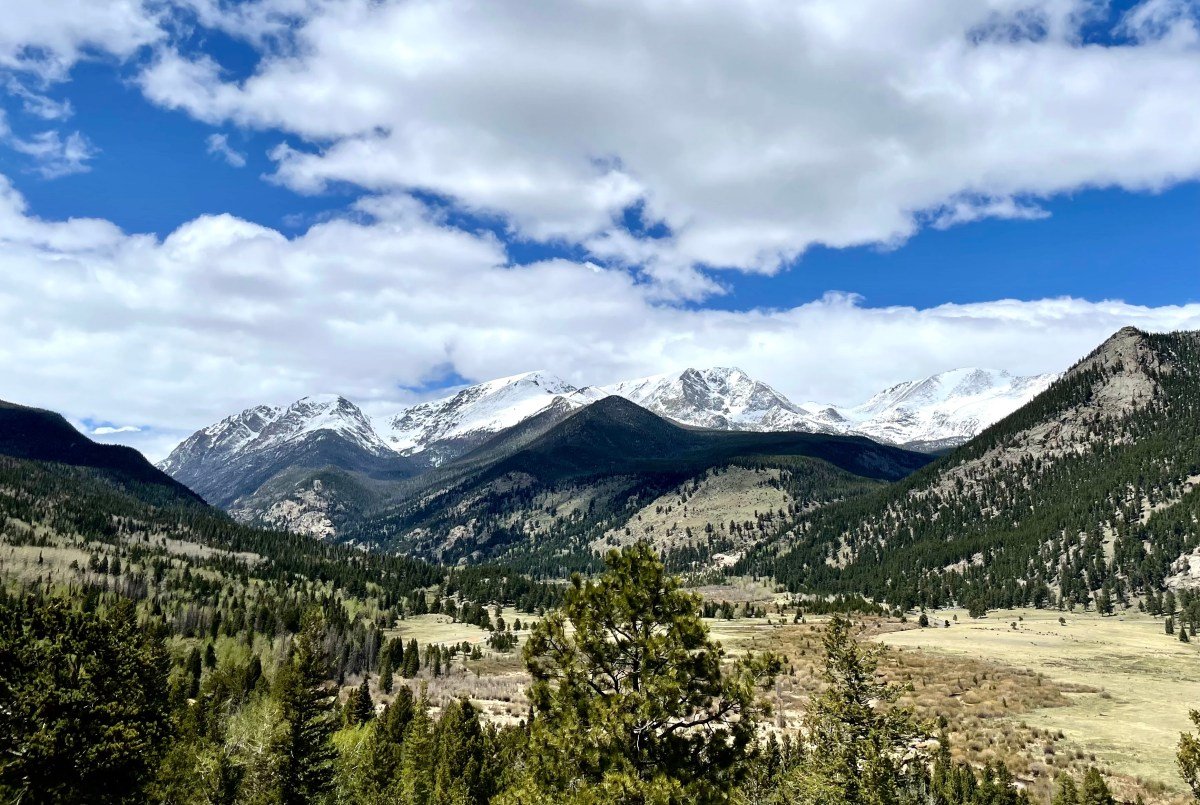
Mountain West
You’ve made it back to the expansive west, and by now you’re a seasoned national park traveler. Head south down to Rocky Mountain National Park, where you’ll be welcomed by stunning mountain vistas, herds of elk, and stunning hiking trails. This park does have timed entry requirements in the summer, so keep that in mind and try to plan ahead.
There are two more Colorado parks that you haven’t visited yet. Next up is going to be Great Sand Dunes National Park, home to the tallest sand dune in North America. Just like other sand dune parks, you can bring your dog here, as long as you stay in the front country. The sand does get quite hot in the summer, so my best tip is to plan a sunrise hike. The dunes will be less crowded and the sand will be cool enough for you to hike barefoot.
Black Canyon of the Gunnison is next. This unique canyon is extremely steep, but it’s also one of the only canyon parks that allows you to drive down into it. If you’d rather hike down, this is an option too, just make sure you get a permit from the visitor center. There are also many overlooks along the rim of the canyon, which is perfect if you’re looking for a more low-key adventure.
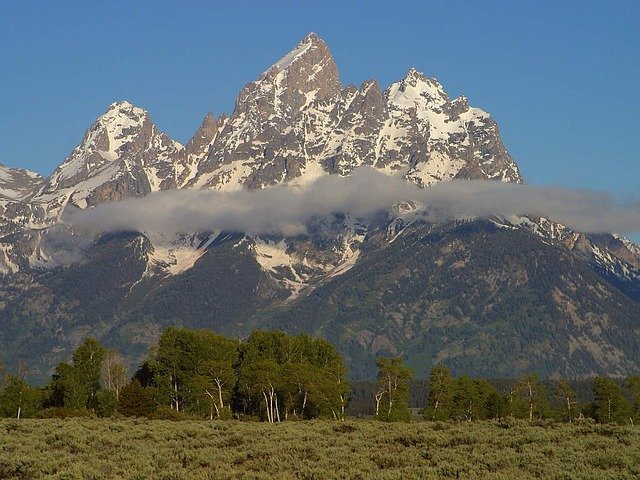
Next, you’ll head north to Wyoming, where you’ll visit Grand Teton and Yellowstone National Parks. These unique parks are neighbors, but they couldn’t be more different. In the Tetons, you’ll find towering rocky peaks, and in Yellowstone you’ll be in the depths of a volcanic landscape. Grand Teton National Park hosts the Jenny Lake trail, one of the most famous trails in the park. In Yellowstone, visit some of the many boardwalks through the volcanic springs, like the famous Grand Prismatic. Both parks are known for wildlife—make sure you’re carrying bear spray if you choose to go hiking and appreciate all wildlife from a distance.
After Yellowstone, you’ll head north to one of my favorite parks in the continental U.S.: Glacier. Located in northern Montana, Glacier National Park is famous for mountains, wildlife, and well, glaciers. Drive the Going to the Sun Road or hike one of the many trails to a glacial view and learn about how ancient ice shaped our landscape. The Going to the Sun Road does require timed entry reservations, but it’s worth the extra hassle to get to drive through this stunning landscape. Make sure you stop at Logan Pass as well as some of the many other viewpoints as you make your way from west to east Glacier.
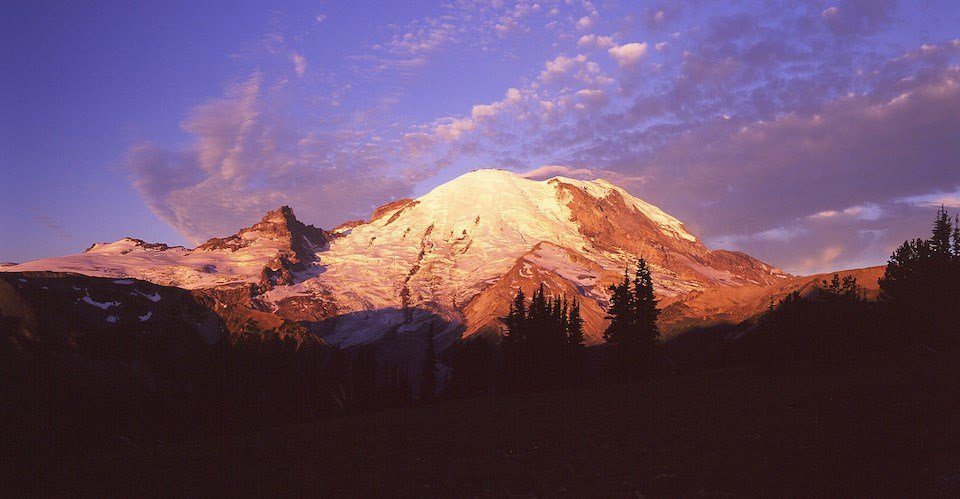
Pacific Northwest
After Glacier, drive west to North Cascades. You’ve officially arrived back on the U.S. West Coast. North Cascades is one of the least-visited parks in the country and is a great place to go backpacking. If you’re not into backpacking, check out Diablo Lake or one of the many views and day hikes throughout the park.
From here, head west to Olympic National Park. This stunning place requires a lot of time to properly explore. Here, you can visit the tall Olympic mountains, the rocky Washington coastline, and the Hoh Rainforest—one of the only true temperate rainforests in North America. This park is home to incredible coastal wildlife, such as Roosevelt elk, banana slugs, and black bears, as well as the invasive mountain goat.
South of Olympic, it’s time to visit Mount Rainier National Park. This park requires a timed entry reservation in the peak season (June-August), so plan ahead. Here, you’ll see the giant 14,000-foot Mount Rainier, which is home to wildlife such as black bears, elk, and foxes. This is a great place for a hike, and Sunrise Point is home to one of my favorite sunrises in the country.
After Mount Rainier, you’ll head south to Oregon’s only national park, Crater Lake. Crater Lake is the world’s ninth deepest lake, which formed as the result of the eruption of Mount Mazama. This park is amazing for a scenic drive, boat tour, hike, or swim, but keep in mind, the Rim Drive is only open in the summer months.
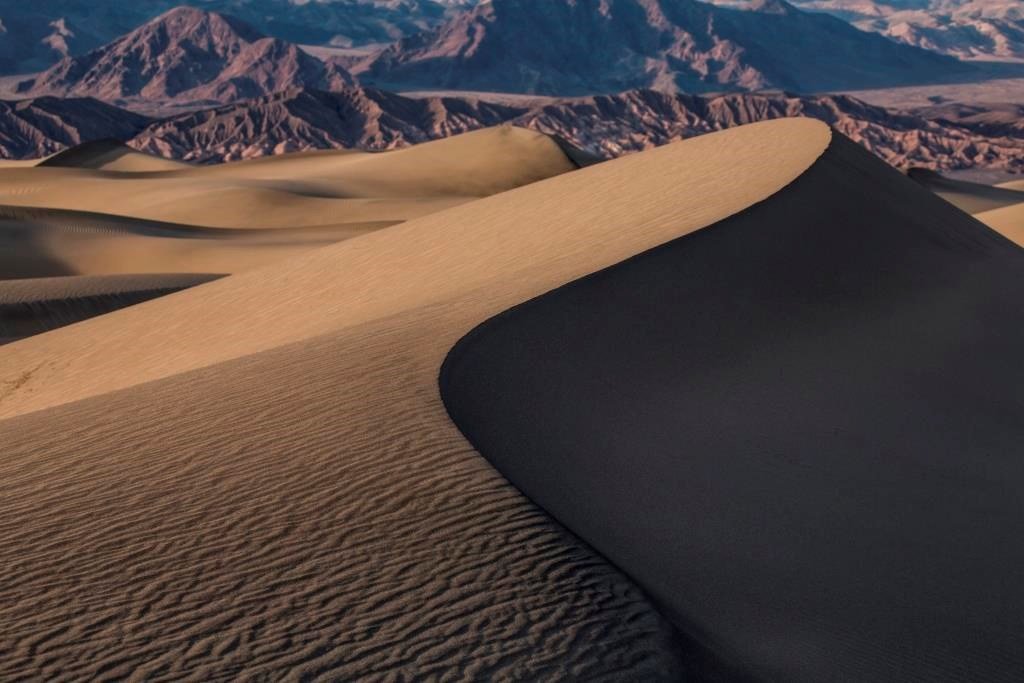
California and Nevada
Coming from Oregon, you’ll visit Redwoods National and State Parks first, where you’ll see the tallest trees in the world. This incredible park is on the coast, so make sure you visit both the forest and the beach while you’re here.
After the Redwoods, make your way back to the mountains, heading toward Lassen Volcanic National Park. This is one of the most underrated parks in the country, home to the southernmost Cascade mountain: Lassen Peak. Lassen stands at over 10,000 feet tall, and the park is home to volcanic activity similar to Yellowstone, as well as alpine lakes and unique lava fields left over from past eruptions. Keep in mind that many roads here are closed in the winter.
Lassen Volcanic is the perfect gateway to the Eastern Sierra, which is how you will get to Nevada. A long drive across the state will allow you to finally visit Great Basin National Park. This park is not what you would expect from this desert state—it’s home to Wheeler Peak, a 13,000-foot mountain that stretches up out of the desert landscape. Book a cave tour to see the Lehman Cave, so you can explore this park above and below ground.
From here, you’re heading back to California and entering Death Valley National Park from the Nevada side. Death Valley is the largest national park in the continental U.S. at over 3 million acres. There is so much to explore in Death Valley, from the lowest point in North America at Badwater Basin to the magical Mesquite Sand Dunes to the 11,000-foot summit of Telescope Peak, and so much in between.
From here, you might be wondering, what about the Western Sierra parks? The thing about California’s geography is that there is a massive mountain range that you have to drive around to access a lot of the parks here. Since Tioga Pass, which leads from the Eastern Sierra to Yosemite, is closed for parts of the year depending on snowpack, I’m going to suggest that you head south from Death Valley to Sequoia National Park.
Sequoia is home to the largest trees in the world—not to be confused with the Redwoods, which are the tallest. This incredible old-growth forest is home to massive trees, beautiful mountains, and amazing wildlife-viewing opportunities. Just north of Sequoia is Kings Canyon—Sequoia’s sister park. These parks are so close together, it only makes sense to visit them back to back. Kings Canyon is the underrated combination of Sequoia and Yosemite’s landscapes, with amazing rocky cliffs, canyon walls, and sequoia trees throughout the park.
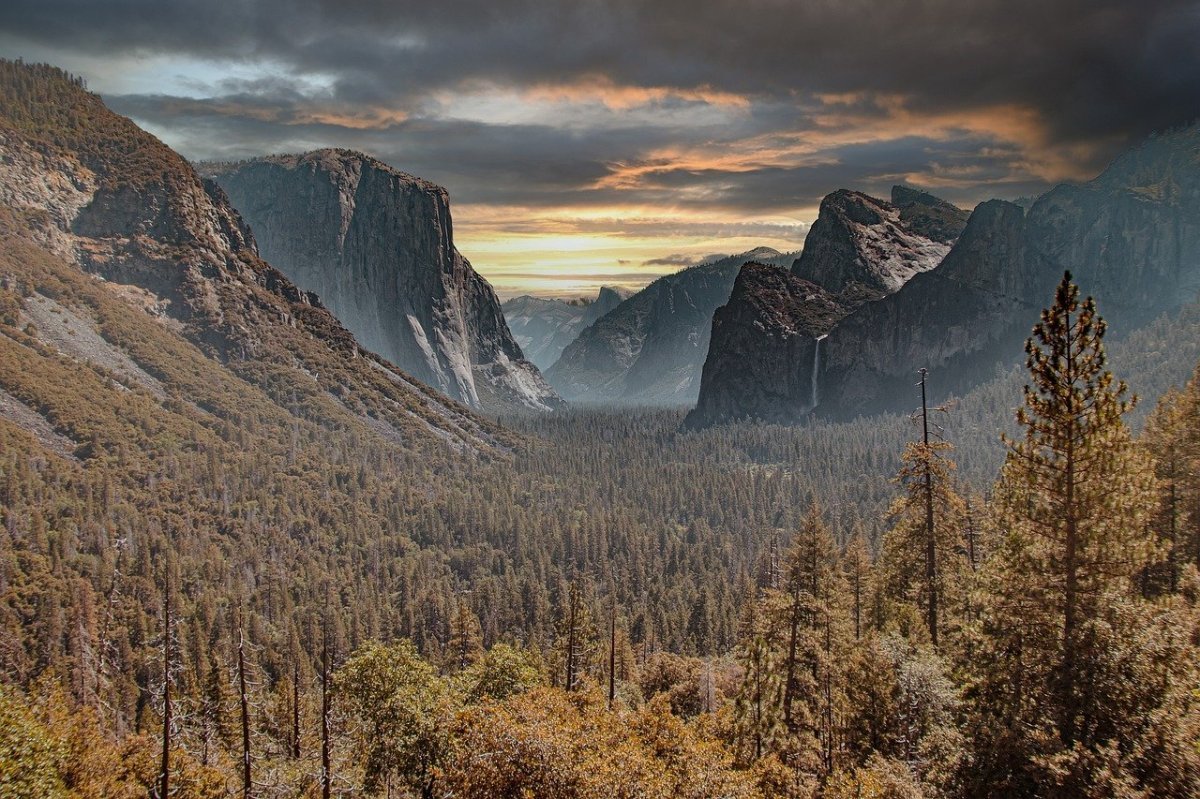
From here, you’ll finally make your way north to the coveted Yosemite. Yosemite does require timed entry during the summer, and I highly suggest reserving a campsite or lodging far in advance—it’s very hard to find a place to stay here. Go see the mighty Half Dome, watch the climbers on El Capitan, or hike to one of the many waterfalls like Vernal or Nevada Falls.
From here, you’ll head southwest to Pinnacles National Park. I highly recommend getting a campsite here, because the park is pretty remote and there aren’t a lot of places to stay nearby. This is California’s newest park and is home to unique rock formations and the unique flora and fauna of central California.
There’s only one park left: Channel Islands. This one is an adventure worthy of being the final park on your road trip. Book a ferry ticket and park your car at Ventura Harbor. Your boat will take you to the island of your choice, and you’ll have the chance to see wildlife like whales, dolphins, and sea lions. Depending on the island you choose, you might even see the rare island fox, which only resides in Channel Islands National Park. Go for a day trip or take your backpacking gear and stay in one of the established campgrounds on the islands.
You now have the knowledge to accomplish a massive feat that many dream of: visiting all of the national parks in the continental U.S. While there are still other parks to see, this is more of the country than most people see in their lifetimes. So, what are you waiting for? It’s time to hit the road.
Source: https://outdoors.com/the-ultimate-national-park-road-trip/



